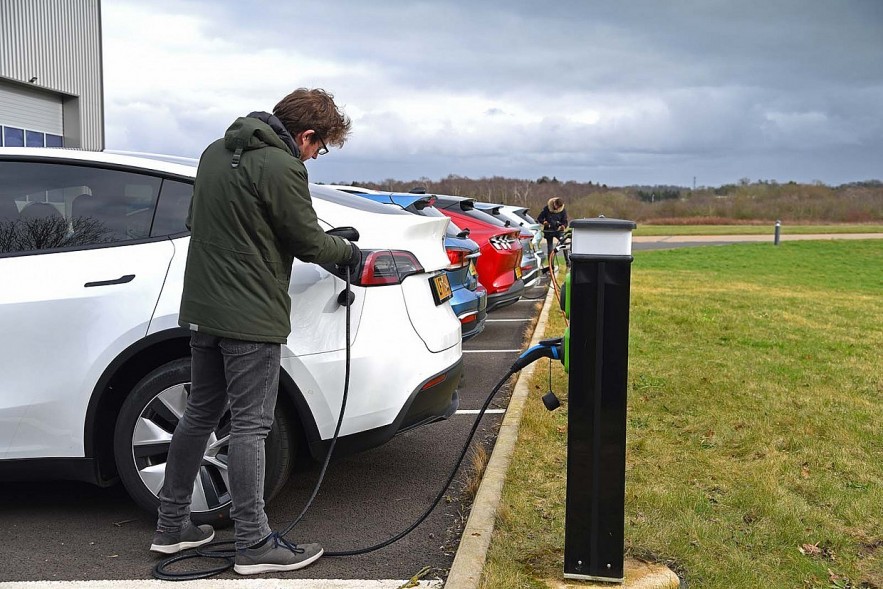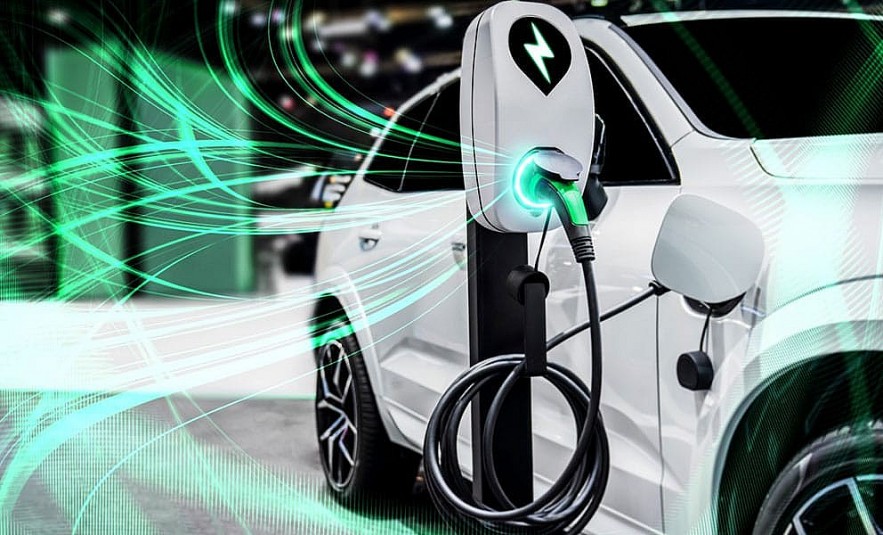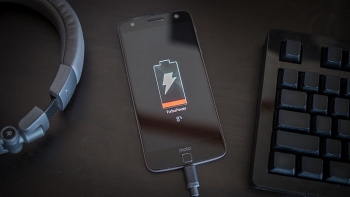9 Simple Tips To Prolong Your Electric Car’s Battery Life
 |
| 9 Tips To Prolong Your Electric Car’s Battery Life. Photo KnowInsiders |
| Contents |
Electric vehicles are one of means of transport that many users are interested in, but it will take a while for their sales to catch up with gasoline and diesel vehicles. A big reason why users are still hesitant is that the limited number of charging stations in the city, preventing long-distance trips.
Some experts have come up with tips to keep electric cars’ battery on a long road trip.
Common mistakes of using car battery
Keeping a low battery level for too long
This is the first step towards good charging practice for your electric vehicle’s battery. Ideally for everyday usage, you should keep your battery at a level of between 20 and 80%.
If you allow your battery to slip down to a very low level on a regular basis (under 5%) and do not charge it up straight away, then you are snipping away at your battery’s lifetime.
There will always be situations where you have to turn a blind eye to this rule. For example, no great harm will be done if you charge your EV to 95% before a long journey and plug it in when you arrive at your destination with less than 10% to go. As long as this only happens occasionally and especially if the battery does not stay at these extreme levels, there’s nothing to worry about.
Leaving your electric vehicle unused for too long
The main advice is always the same: an electric vehicle must run on a very regular basis to avoid wearing down the battery prematurely.
If you do not drive around much, make sure your car does not stay immobilised for more than one month. To go back to the previous item, make sure you keep within the 20 to 80% bracket when your car is parked for a long time, the best window being between 50 and 75%.
Parking your electric vehicle outside
This last point is not exactly a “mistake”. However, if you do have the choice, you should park your electric car in a sheltered environment such as a garage or underground car park.
In very hot weather, it is best not to keep your EV outside in the sun, if only for the wear and tear on the car itself. If your car tends to heat up quickly, you can also wait until the battery temperature falls before charging it.
On the other hand, while the winter cold does not lead to premature wear and tear on the battery, it does stop the cells from functioning at their optimum level. This is why we see a fall in EV range during the winter months. However, this does not exacerbate battery deterioration.
What are the consequences of running out of battery power in an electric car?
 |
| Photo Move Electric |
A few different consequences can occur if your EV runs out of power. Firstly, you may be stuck in a difficult or dangerous location. If you cannot get to a charging station, you may need to call a recovery service that can be both expensive and time-consuming.
You may also find that your electric vehicle’s battery is damaged if it is completely drained. This might mean that it will need to be replaced, which can be a costly repair. Continual complete draining will leave you with a battery that will not hold a charge, or at the very least, its performance will be severely degraded.
9 Simple Tips To Prolong Your Electric Car’s Battery Life
 |
| Photo Move Electric |
1. Route planning
This may sound like a no-brainer on any long journey, but it's even more important in electric cars. You should plan the exact route on a mapping service like Google Maps and determine how long it will take you to drive. This will give you an idea of how many times you will take breaks during your journey to dine or just rest.
If it is a long trip, you can count how many days it will be and where you can spend the night. Choose your hotel, lunch stop and picnic spot in advance, depending on your preferences and your passengers.
2. Calculate charging time relevant with resting time
Once you've finished planning, it's time to determine where to recharge the car. At this point, you have to determine in detail whether you should charge in the break time and whether the battery is enough to run the next distance or not.
3. Have a backup charger
While electric vehicle chargers are on the rise in some regions, not all of them work and have slots available for your car. Therefore, at each planned charging stop, charge your backup charger.
4. Know how long your car takes to charge
This seems simple enough, but new electric vehicle owners often don't realize that it takes longer to charge than to fill up with fuel. Depending on your charging status, it may take as little as an hour to fully recharge. This is why it's important to check your vehicle’s claimed charge times in your vehicle's manual, to get at least some idea of your waiting time. Not to mention your car is queuing up behind another vehicle, that time will get longer.
| What happens when your electric car runs out of charge? In most cases, you will not suddenly be surprised by a completely drained battery. Every electric vehicle should warn you before the issue occurs. You will often be put into “limp mode” – this is a state where only the bare minimum systems are kept running to enable the range to be maximized so you can reach your destination. If you find yourself in a situation where your EV is running out of power, and limp mode has not automatically been engaged, you should first turn off all unnecessary lights and accessories. This will help conserve what power you have left. If you are unlikely to be able to reach an EV charging station, you will want to call a roadside assistance service or someone who can assist you in getting your vehicle to a suitable location. |
| What happens if your electric car runs out of battery in the middle of nowhere? If you are driving an electric car and it runs out of charge, the first thing you will want to do is find a place to plug in, perhaps you are close to work and Electric Car Charging Points For Business. and Electric Car Chargers For Office Charging? The good news is that there are now plenty of charging stations available in different locations around the country. However, not every village or town will have a charging station, so it is always important to plan ahead. The best course of action is to avoid running out of battery power, but you may need to use a vehicle recovery service if your battery is totally drained. |
| What happens if your electric car runs out of battery in a city? If you are running low on power and find yourself in an urban area, you may be able to find a public EV charging station. Even though electric charging stations are more common in cities, they can often be quite busy, and it may take some time to find an open spot. If you can get to a charging station and must wait nearby, ensure you turn off every system that you can to preserve the maximum amount of charge. |
| What happens if an electric car runs out of charge on the road? If you have been through limp mode and completely run out of charge, you will suddenly find out what happens when your EV runs out of power. The vehicle will simply stop, and the electric systems will become unusable. You must ensure you are out of danger if this situation is likely to occur. Find somewhere safe to pull up before the battery is completely dead and get off major roads. The slower the traffic is around you, the safer you will be. |
5. Don't fully charge if you don't need it
It’s amazing that we still see tech sites advising regular full discharge of your battery, even when this has been proven as detrimental. Regularly discharging lithium-ion batteries to 0% is harmful and partial discharges with regular top-ups are recommended to extend the recharge-cycle lifespan of the batteries.
The occasional full discharge on that extralong ride is no problem! It’s ok to top up lithium batteries regularly and, as the chart below shows, it’s best to operate them in the top half of their discharge cycle; lithium batteries don’t have a ‘memory effect’ that some other battery chemistries have. If you are doing short rides on a regular basis, it is slightly better to charge it every few rides rather than every ride.
 |
| Photo Fully Charge EV |
6. Keep The Battery Cool
Environmental conditions are an important factor affecting lithium batteries. For example, leaving one in your car in the hot sun will guarantee you lessen the life of your battery. In fact, that would be the worst situation: keeping a fully charged battery at elevated temperatures. It’s a good rule of thumb to store your bike out of the direct sunlight for long periods and when not in use, keep your battery in a cool place, preferably below 20°C (68°F). The chart below, provided by Battery University, shows the impacts of temperature upon recoverable capacity of a battery.
7. Cost calculation
Electric car owners need to calculate budget for charging costs if necessary. In particular, avoid the case in some countries that only certain types of e-wallets are used for electric vehicle battery charging.
8. Bring an extension cord
Bringing an extension cord is not really necessary, but it can help you in times of trouble.
If you can't find a public charger on your journey and your battery is running low, sometimes your only choice is to charge it into a suitable outlet. Remember this is the slowest form of charging and a full charge can take all day. This is only a last resort and you should only take it if you have a few hours to spare like an overnight stay. The plug may not be conveniently located and the car's supplied cable may not be accessible.
9. Make a side plan
Ultimately, it's best to accept that long trips in an electric vehicles will take longer than in a petrol or diesel vehicle. Don't set yourself a tight deadline, and if it can't be done in one day, stretch it to two.
 11 Simple Ways to Save Laptop Battery Life 11 Simple Ways to Save Laptop Battery Life You are worried about your laptop's battery life, aren't you? It is a popular concern of people using laptop for working or studying. That ... |
 How to Save Smartphone Battery With 7 Simple Tips How to Save Smartphone Battery With 7 Simple Tips Until someone invents a better battery, it's worth reminding smartphone owners that a little power management goes a long way. |
 Top 5 iPhones With the Longest Battery Life (Updated) Top 5 iPhones With the Longest Battery Life (Updated) Battery life is one of the most important factors for smartphones these days. In the past, the iPhone was often criticized for its low battery ... |
























